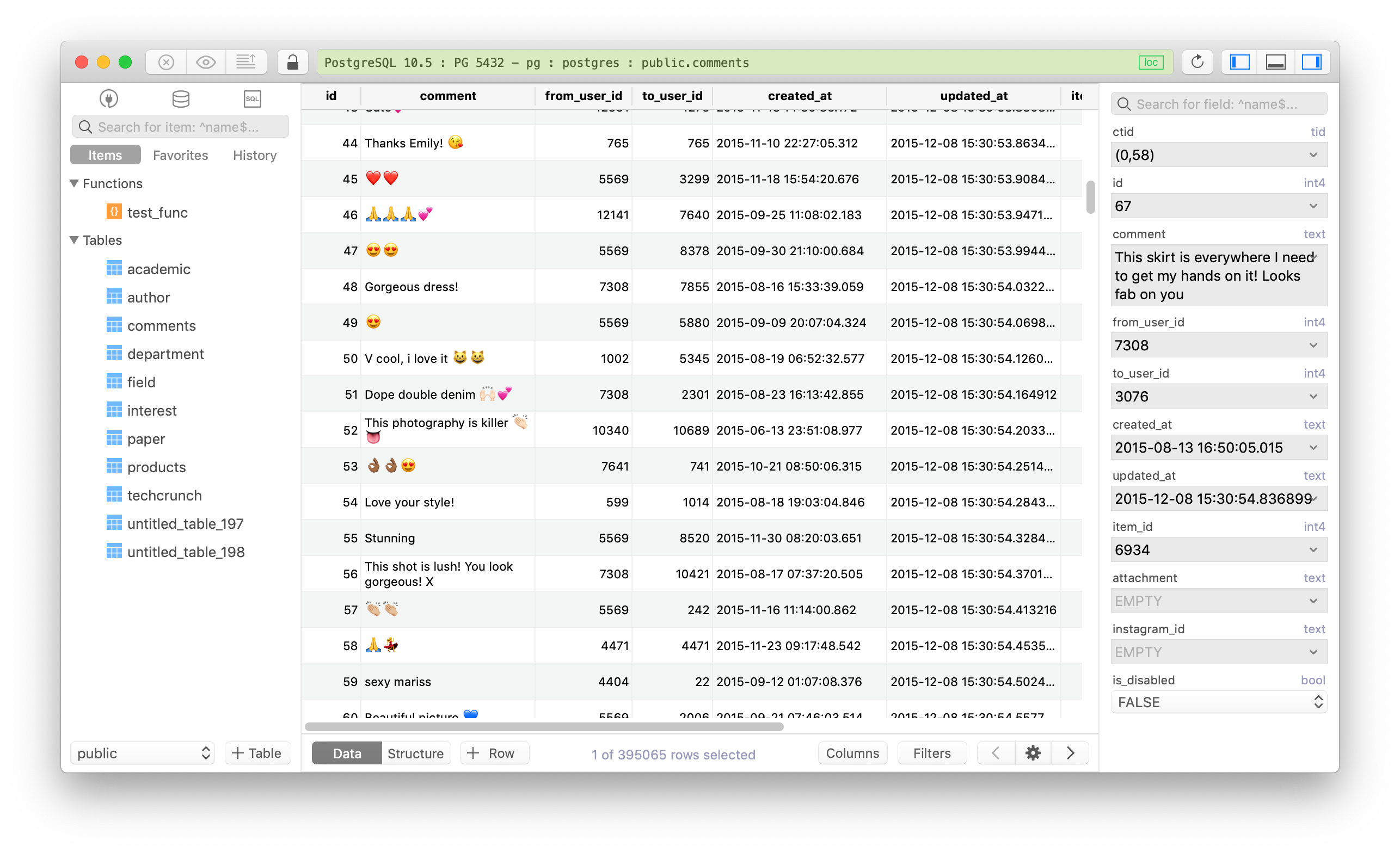

I also like that it is a perpetual license, so you don't need to "subscribe" if you don't want to.

This is well worth any developer's time as it accounts for only an hour or two of their wages most likely. You can upgrade to support them and to remove the few limitations in the free version for just $60. New devs will easily be satisfied with the free version. First of all, it is free to use in its entirety forever, with only a small handful of limitations. The pricing model is EXTREMELY FAIR in my opinion. In addition, I can pay 1 licensing fee and get access to a powerful tool for working with all of these databases, instead of needing a separate tool for each one (which was the case in the past). I can get proficient at one tool and use it for everything. It is awesome to have one very powerful and well-maintained program for all my database needs. I like that you can use the same GUI for PostgreSQL, MYSQL, Redis, MongoDB, and SQLite (there are even more than this, but these are the ones I use). I don't have any affiliation but started with their mac app. In our example, we are only interested in the keyspace section, which contains information about the keys in a database.I've been using TablePlus for a long time now as well. You can specify a specific section in the Redis, such as server, memory, stats, CPU, cluster, keyspace, modules, and more.Ĭheck the Redis official documentation to learn more. The INFO command provided by Redis is one of the best tools to get detailed and human-readable information about the Redis cluster and the keys stored.

There is a way you can still view the information about the keys in a Redis database while avoiding the drawbacks of using the KEYS command. Get Redis Key Info using the INFO command. This is because Redis will scan all the keys in the database to find a pattern. It can lead to slow performance exceptionally when executed on an extensive database. NOTE: The KEYS command contains one major drawback. The command will print all the keys in the specified database.


 0 kommentar(er)
0 kommentar(er)
